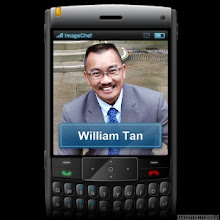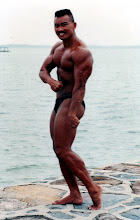{*__^} 龙的传说 /{^__^}\
 me in yellow cap preparing for the victory celebration!
me in yellow cap preparing for the victory celebration! .

me in a low racing position at the rear…
.
.
.
 Me in Boat 3, bending low in a racing position with the ruddle out of the water. Not many coxswain could race with the ruddle out of the water and still in full control of the boat....
Me in Boat 3, bending low in a racing position with the ruddle out of the water. Not many coxswain could race with the ruddle out of the water and still in full control of the boat....
 Me in Boat 3, bending low in a racing position with the ruddle out of the water. Not many coxswain could race with the ruddle out of the water and still in full control of the boat....
Me in Boat 3, bending low in a racing position with the ruddle out of the water. Not many coxswain could race with the ruddle out of the water and still in full control of the boat.... .

 ....presenting the champion!
....presenting the champion!
^__^

me in Boat 5, charging at full speed towards the end point...
 ....presenting the champion!
....presenting the champion!^__^
About Dragon Boat Racing
'
A dragon boat or "dragonboat" is a very long and narrow human-powered boat now used in the team paddling sport of dragon boat racing which originated in China in pre-Christian times.
The standard crew complement of a contemporary dragon boat is around 22, comprising 20 paddlers in pairs facing toward the bow of the boat, 1 drummer or caller at the bow facing toward the paddlers, and 1 steerer or coxswain (helm) at the rear of the boat, although for races it is common to have just 18 paddlers.
Dragon boats vary in length and crew size will vary accordingly, from small dragon boats with 10 paddlers, up to the massive traditional boats which have upwards of 50 paddlers, plus drummer and steerer.
.
A dragon boat or "dragonboat" is a very long and narrow human-powered boat now used in the team paddling sport of dragon boat racing which originated in China in pre-Christian times.
The standard crew complement of a contemporary dragon boat is around 22, comprising 20 paddlers in pairs facing toward the bow of the boat, 1 drummer or caller at the bow facing toward the paddlers, and 1 steerer or coxswain (helm) at the rear of the boat, although for races it is common to have just 18 paddlers.
Dragon boats vary in length and crew size will vary accordingly, from small dragon boats with 10 paddlers, up to the massive traditional boats which have upwards of 50 paddlers, plus drummer and steerer.
.
The Dragon Boat Festival is one of the most spectacular traditions of ancient China. It is an exciting period for rowing competitions marked by the eating of rice dumpling called "Ma Chang". In some Chinese-speaking societies, the day is also known as the "Poets' Day".The Legend behind the Dragon Boat Festival embodies the story of love and service for one's country. About 2300 years ago, during the Warring States period, a well-respected poet and statesmen named "Qu Yuan" lived in the Chinese Kingdom of Chu and served the government with integrity as Minister of State. He was disturbed by the corruption and by the court intrigues of many courtiers who resented his talent, popularity and sense of righteousness. One version said that other officials convinced the Emperor that Qu Yuan was corrupt, that his plea for reforms be ignored and had him banished from the Kingdom.
.
For years, he wandered the countryside composing poems expressing his patriotism and love for the people. Either as an act of despair or an ultimate protest against the corrupt government, Qu Yuan threw himself into the Mei Lo river (in today's Hunan province) on the fifth day of the fifth month in the year 278 B.C. Qu Yuan opted to commit suicide rather than lose face and honour by serving a corrupt government.
.
He composed two famous poems known as "Ai Ying" and "Huai Sha" before jumping into the river with a large stone tied to himself. Grief-stricken local fishermen who witnessed Qu Yuan's desperate act, tried to save the patriotic poet. They sailed up and down the river to look for him and desperately thrashed the water with their oars and paddles to scare off the hungry fishes which might eat his body. To commemorate the patriotic man, the fishermen and rural town folks threw cooked rice dumplings wrapped in silk or banana leaves, into the water in order to appease the spirits of the river on his death anniversary. These rice dumplings are called "Tsung Tze" or "Ma Chang".
.
The first Dragon Boat Races were recorded in the Tsin period. It became popular in the Tang Dynasty ( 618-907 A.D.) spreading throughout the Yangtze River Valley and to most of South China. One paddler traditionally stands in the boat searching for Qu Yuan's body while a drummer on board and the ferocious-looking dragon designs were added to frighten away evil water spirits. This is because Chinese people traditionally regarded the dragons as presiding over the water and having dominion over rainfall. It is also the supreme symbol of power and benevolence in the Far East. In the present day, the Dragon Boat Festival is held annually in different nations world wide. In China alone, 20 million people are active in this sport which is organised in the various cities and provinces. In a young country like Singapore, we are already celebrating 22 years of Dragon Boat activities.
.
The first Dragon Boat Races were recorded in the Tsin period. It became popular in the Tang Dynasty ( 618-907 A.D.) spreading throughout the Yangtze River Valley and to most of South China. One paddler traditionally stands in the boat searching for Qu Yuan's body while a drummer on board and the ferocious-looking dragon designs were added to frighten away evil water spirits. This is because Chinese people traditionally regarded the dragons as presiding over the water and having dominion over rainfall. It is also the supreme symbol of power and benevolence in the Far East. In the present day, the Dragon Boat Festival is held annually in different nations world wide. In China alone, 20 million people are active in this sport which is organised in the various cities and provinces. In a young country like Singapore, we are already celebrating 22 years of Dragon Boat activities.
*__*










No comments:
Post a Comment